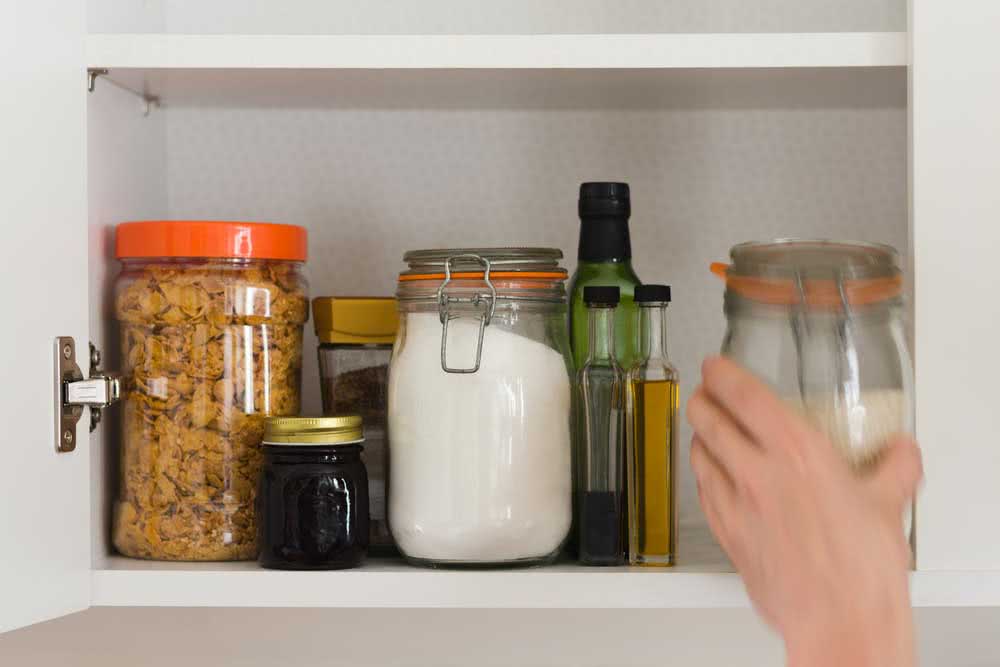When it comes to home economics, every penny counts. And one of the biggest “thieves” in the budget is grocery shopping or, better saying, the wrong purchases you make every single month.
But thankfully there is a way for that! And this is no magic formula, just planning and some tips on how to save on the market.
And guess where these tips are? Here, of course, in this post! Come and see.
Why save in the market
According to data from IBGE (Brazilian Institute of Geography and Statistics), a Brazilian family usually spends, on average, around 40% to 50% of their wages on market purchases. A significant slice of the cake, isn’t it?
However, finance experts recommend that these expenditures should not exceed 37% of the household budget, otherwise, other sectors of family life may be adversely affected.
To balance this account only even with a lot of planning. And what do you get out of it? Economy, first of all, since you eliminate unnecessary and superfluous purchases.
Second, you end up wasting food.
Want another reason? Saving at the supermarket makes you healthier, because most of the processed foods bought on impulse are very harmful to health.
How to save on the market: 15 practical tips
1. Set the purchase limit
Start your strategy to save at the supermarket by setting a limit on your purchases. How much can you and, most importantly, need to spend? R $ 500, R $ 700 or R $ 1000?
Having this well-defined limit is essential to avoid falling into excess. However, this does not mean that you should go hungry or refrain from consuming what you like. On the contrary, the tip is to design smart planning that is able to satisfy your needs, personal tastes and, of course, your budget.
And if you are that kind of person who loves a silly thing, you can even stipulate a maximum amount to spend on these superfluous, so you are happy and do not run out of budget.
2. Clean and organize your pantry

Before you go grocery shopping, do one simple thing: clean and organize your pantry and refrigerator.
Most likely you will find items that you didn’t even remember anymore, as well as you will come across expired foods that need to be thrown in the trash.
By doing this cleaning you get a clearer and more objective notion of what you really need to buy and what you can still wait a little longer. The same goes for beauty, hygiene and household cleaning items.
3. Put together a menu
Do you really want to save on the market? Then put together a menu. It can be monthly or weekly. The important thing is to put there all the ingredients that will be needed to prepare everything you need.
In addition to eating healthier, you also avoid buying unnecessary items and wasting food.
Extra tip: prioritize seasonal foods and those with more affordable prices on your menu, avoiding those that are going through an inflationary period.
4. Make a list
With the menu in hand, just make the shopping list. But be careful: follow the list to the end and remember: if a certain item is not noted, it is because you do not need it, then resist the temptations of the supermarket.
5. Set a day for shopping

It may be on Saturday, Monday or Wednesday, but it is important that you have a day on your calendar dedicated to weekly grocery shopping.
Why is it important? To avoid having to rush through the market and buy the first thing you see ahead of you to research the price.
And what’s better: weekly or monthly purchases? Well, there are those who advocate monthly purchases, others prefer weekly purchases. You need to define what works best in your home. But a good tip is to buy only those items considered non-perishable, that is, that last longer, such as grains and cleaning products, on a monthly basis. Leave for weekly purchases only what is perishable, such as fruits and vegetables.
Even if you decide to adopt this strategy, it is worthwhile to go to a wholesaler to buy non-perishable items, since when buying in quantity the tendency is to save even more.
6. Eat
Never go to the supermarket hungry. Really! The tendency for you to fall into the pitfalls of marketing is enormous. So, eat light before going shopping.
7. Leave the children at home
Which child resists a sweetie, a snack or an ice cream? And which father and mother can resist the son’s wicked look? So it is! This is a dangerous combination for those who want to save money at the supermarket. Therefore, the best strategy is to leave the children at home.
8. Pay cash

Avoid paying your grocery purchases at all costs on credit or even debit. This is because the tendency is for you to spend more, since you are paying with an “invisible” money. The best alternative is to pay for purchases in cash and to be even more radical take with you only what has been determined in the budget, not a penny more.
9. Search prices
Make it a habit to research and compare prices among supermarkets near where you live. You will see that some are good for buying hygiene items, others are better for the fruit and vegetable sector, and so on.
And if you don’t have a lot of time to do this via crucis, bet on using apps. Nowadays there are apps that do this job of comparing and researching prices for you.
10. Look at marketing!
Do you know that smell of fresh bread inside the market? Or that super well located product on the shelf? All of these are marketing strategies to make you buy.
The most expensive products, for example, tend to be in the center of the shelves, at eye level and, of course, within easy reach. The cheapest ones, on the other hand, are usually at the bottom or much higher.
Another trick is the long corridors. And what are they for? To get you to the basic items, like rice and beans, it happens that in the middle of this path you end up going through all sorts of superfluous items and then you know, right ?.
11. Is family size worth it?
Have you ever wondered if it’s really worth taking a family-sized package home instead of the full-size product? To take the doubt, always have a calculator with you and do the math to find out if the promotion is really advantageous.
12. Stay focused
Don’t be distracted while shopping at the supermarket. That means you can stay focused on your list and avoid walking down corridors where you don’t have anything you need. Remember: the market is not the place to go for a walk.
13. Half of the month

Did you know that the best time of the month to shop is in the second half of the month? This is because most people tend to make purchases as soon as they receive their wages, usually in the first or last week of the month.
And to guarantee cash flow, supermarkets start to create offers and promotions to attract customers. So, if possible, schedule your purchases between the 15th and the 25th.
14. Check prices at the checkout
Be aware of the prices recorded by the cashier when you go shopping. It is normal for many products to have different values between the one shown on the gondola and the one that was actually registered by the bar code.
15. Learn to save your purchases
When you arrive with your purchases at home, keep them in the right way to ensure adequate consumption and product turnover, so that you do not have waste.
Place perishable items in the front, as well as those that are already open or in use.
Did you write down all the tips on how to save on the market? Now just put this whole strategy to work on your next purchases.




